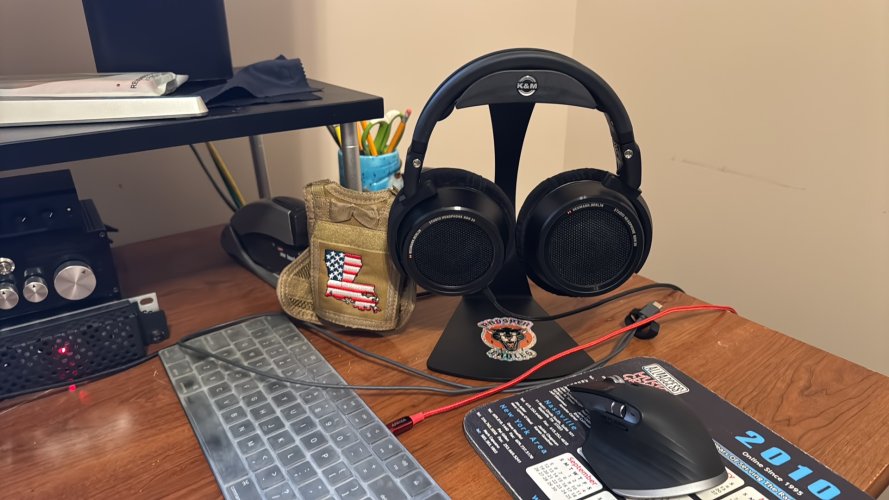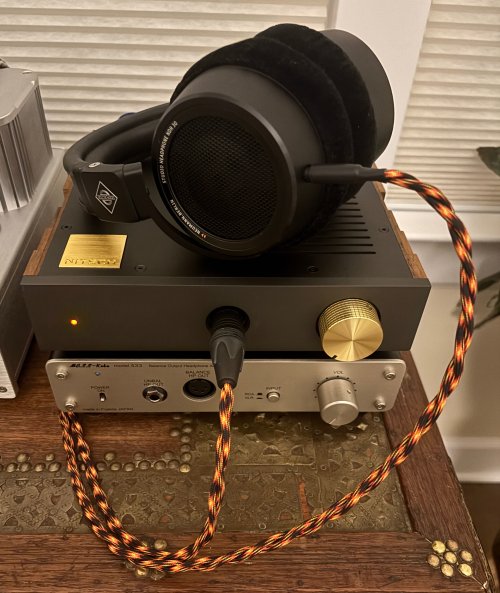@Preben Raunsbjerg could you please explain more about this?
I've always found NDH30 to be a bit weak when it comes to the low end frequencies. I'm curious if you've used them for mixing electronic music too? or any genres with sub-bass?
What I mean is that the dry delivery of the low end (FOR ME!) can lead to mixes which are perceived to be a bit lean on other systems - simply because what you hear on the 30's is probably quite a bit tighter than most other systems of reproduction.
For instance the separation between bass drum and bass is very clear on the 30's - which leads me personally to gravitate towards having a little less of both because I can hear them both clearly and therefore am thinking 'that's plenty bass'.
And oftentimes a 2024 mix is expected to have more low end than the late 70s mixes I grew up with (unless, of course, it's a mix/master which is going to vinyl but that's a different story).
So I find that if I push the bass a tiny bit more than I perhaps would otherwise have dared, everything is lovely. And, actually, I DO like the fuller bass so it's probably to a large extent mentally getting my head round that it's ok to have a bit more bass! It won't collapse on other systems, not least because you can hear quite clearly where and how steeply to roll off the lower frequencies.
As for the EDM, I must admit that this is not a style I do much work in - perhaps a little bit if/when it crosses over into rock (or jazz) - but not much. I do get the occassional 808/909 combo crossing my virtual desk and I am also familiar with a Big Bass Drop™ but that is about it.
If really high volume is something you need in order to get into your mixing then I am really not the person to ask.
Personally, I don't need much volume to 'get into it'. For me, and I am fully aware that this, as most things music, is entirely personal and individual, but for me the 'getting into it' comes from groove, the harmonic content and the lyrical content - and in many ways the 'space between' the notes and instruments moreso than anything else. It's the stuff you don't hear that makes the stuff you do hear do what it does.
The NDH30 has a relatively fast (dry) delivery which is what makes it possible to do the 'turn it down really low and see/hear if anything sticks out' thing I mentioned in my original post. And I love that about it. I do blast it from time to time - on speakers and on the cans - but it's for very short moments of time.
Now, I am somewhat familiar with a debate going on over on Jules' forum 'Gearspace' about whether the 30's can hang with the planars for EDM. I haven't checked in on the debate for more than a year but I do remember listening to some of the sound examples linked there which were supposedly showing off the 30's inability to 'handle' the low end presented to them.
What I heard (and this is just me expressing my perception of it which may well be completely off the mark!) was that the 30's, rather than 'crapping out under pressure', actually revealed some distortion in the source material - as far as I can possibly occuring after too heavy-handed limiting with a (too!) fast release.
Whether that would drive you mad and totally put you outside of the 'getting into it' mode depends entirely on you. And I can relate to the arguments both for and against. I am currently mixing a track where the vocal has been tracked with more than a hint of distortion which shouldn't be there.
On most systems (but not the Adams nor the 30's) one would possibly be able to ignore this to a certain extent and just get on with it, in the knowledge that apart from applying various bit of Izotopian de-clipping trickery, which introduces its own set of issues, there really isn't much one can do about it.
However, on the 30's, the shortcomings in the recording really are pointed out very clearly. On the plus-side, if one can concoct something which is bearable on the 30's, my experience is that it won't show up as an issue on other system. At least as long as you keep an ear on the recessed high mids.
For me it works brilliantly. The combination of digital and extremely revealing monitoring does force you to sort many more things out than perhaps you would feel inclined to have to sort out on other systems. For some this would lead to mixes that aren't as good because their flow would be constantly interrupted by little niggles they would feel needed to be sorted out before they could move on. For others it's the opposite. I belong to the latter category.
The only way forward is to try mixing on them for a while and see how your mixes translate in the 'real world' (whatever that may turn out to be if we ever find it!).
As always your mileage may vary.
P x




















